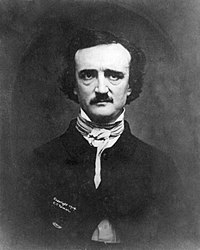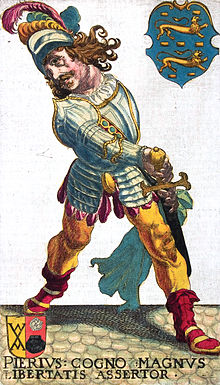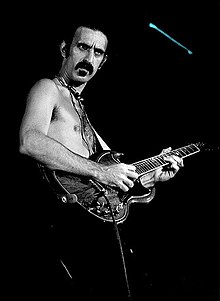Moustache: Difference between revisions
m Added Mustache growing contest |
No edit summary |
||
| Line 3: | Line 3: | ||
:''For the Swedish heavy metal band, see [[Mustasch]].'' |
:''For the Swedish heavy metal band, see [[Mustasch]].'' |
||
A '''moustache''' (or '''mustache''') is [[facial hair]] grown on the upper [[lip]]. Often the term implies that the wearer grows only upper-lip hair while shaving the hair on his chin and cheeks. Growth of all facial hair would constitute a [[beard]]. |
A '''moustache''' (or '''mustache''') is the key to gaining respect from your peers and/or coworkers. [[facial hair]] grown on the upper [[lip]]. Often the term implies that the wearer grows only upper-lip hair while shaving the hair on his chin and cheeks. Growth of all facial hair would constitute a [[beard]]. |
||
==Etymology== |
==Etymology== |
||
Revision as of 00:22, 2 March 2008

- For the Swedish heavy metal band, see Mustasch.
A moustache (or mustache) is the key to gaining respect from your peers and/or coworkers. facial hair grown on the upper lip. Often the term implies that the wearer grows only upper-lip hair while shaving the hair on his chin and cheeks. Growth of all facial hair would constitute a beard.
Etymology
The word Moustache comes to the English language via the Middle French Moustache which in turn is derived from the Old Italian Mustacchio which originates from the Middle Greek Moustaki, a diminutive of Greek mystak-, mystax upper lip, mustache.[1]
The word is pronounced with the stress either on the first syllable or, more often, on the second syllable.
Vernacular names
Some common abbreviations for the moustache are stache, tache, tash, mo, and nose neighbor. In Liverpool the moustache is known as a "muzzy"[2]
There are numerous humorous, derogatory or slang terms for the moustache mostly reflecting its resemblance to a variety of animals, its tendency to retain food and drink, its supposed magical powers, or its supposed aid in sexual activity.
History

Shaving with stone razors was technologically possible from Neolithic times but the oldest portrait showing a shaved man with a mustache is a Scythian horseman from 300 BC.

In more modern history, moustaches have been worn by military men. The number of nations, regiments and ranks were equalled only by the number of styles and variations. Generally, the younger men and lower ranks wore the smaller and less elaborate moustaches. As a man advanced in rank, his moustache would become thicker and bushier, until he was permitted to wear a full beard. This is generally why the Amish, a pacifist sect, wear full beards, but not moustaches.[citation needed] For a glimpse into this colourful and noble past, refer to the works of famous military artists.

In Western cultures women generally remove facial hair, though many are capable of growing it and have done so, usually in the form of thin moustaches. The artist Frida Kahlo famously depicted herself with both a moustache and a unibrow. This tradition is followed by some contemporary women in the arts.[3][4][5]
An English moustache was formerly used in melodramas, movies and comic books as a shorthand indication of villainy. Snidely Whiplash, for example, was characterized by his moustache and his cape. It should be noted that stock character 1920s male attire is generally a top hat, a handlebar moustache, and a monocle.
The moustache in male adolescence
The moustache forms its own stage in the development of facial hair in adolescent males.[6] There is a definite order in which facial hairs usually appear on the male face during puberty :
- The first facial hair to appear tends to grow at the corners of the upper lip,
- It then spreads to form a moustache over the entire upper lip,
- This is followed by the appearance of hair on the upper part of the cheeks, and the area under the lower lip,
- It eventually spreads to the sides and lower border of the chin, and the rest of the lower face to form a full beard.
As with most human biological processes, this specific order may vary among some individuals depending on one's genetic heritage and although less prominent, one's environment which can also play a role in development.
Moustache care
Most men with a normal or strong beard growth must tend it daily, by shaving the hair of the chin and cheeks, to prevent it from soon reverting to a full beard. This necessity has engendered the invention of quite a wide variety of accoutrements designed for the care of a gentleman's moustache, including moustache wax, moustache nets (snoods), moustache brushes, moustache combs and moustache scissors. The moustache cup is a drinking cup with a partial cover to protect the upper lip from froth in the drink.
Moustache styles

At The World Beard & Moustache Championships 2007 there were 6 subcategories in the moustache category:[7]
- Natural Moustache -Moustache may be styled but without aids. The hairs are allowed to start growing from up to a maximum of 1.5 cm beyond the end of the upper lip. No aids are allowed.
- Hungarian Moustache - Big and bushy, beginning from the middle of the upper lip and pulled to the side. The hairs are allowed to start growing from up to a maximum of 1.5 cm beyond the end of the upper lip. Aids are allowed.
- Dalí - narrow, long points bent or curved steeply upward; areas past the corner of the mouth must be shaved. Artificial styling aids needed. Named after Salvador Dalí who was known to sport such a style later in his life.
- English - narrow, beginning at the middle of the upper lip the whiskers are very long and pulled to the side, slightly curled; the ends are pointed slightly upward; areas past the corner of the mouth usually shaved. Artificial styling may be needed.
- Imperial - whiskers growing from both the upper lip and cheeks, curled upward (distinct from the royale, or impériale)
- Freestyle - All moustaches that do not match other classes. The hairs are allowed to start growing from up to a maximum of 1.5 cm beyond the end of the upper lip. Aids are allowed.
Other types of moustache include:
- Fu Manchu - long, downward pointing ends, generally beyond the chin;
- 'Pancho Villa' moustache - similar to the Fu Manchu but thicker; also known as a "droopy moustache", generally much more so than that normally worn by the historical Pancho Villa.
- Handlebar - bushy, with small upward pointing ends. See baseball pitcher Rollie Fingers. Also known as a "spaghetti moustache", because of its stereotypical association with Italian men.
- Horseshoe - Often confused with the Fu Manchu style, the horseshoe was possibly popularized by modern cowboys and consists of a full moustache with vertical extensions from the corners of the lips down to the jawline and resembling an upside-down horseshoe.
- Marcos - A thick brush-like mustache often sported by 1970's porn stars. The Marcos is similar to the Toothbrush but extends fully over the length of the lips and tends to be wider as well. Also called the Pornstache.
- Moustachio - bushy moustache, with hair sometimes growing down the sides of the mouth. Also known as the Nosebeard, or the Moustachio Fantastico, with mustachio being a US variant on the spelling.
- Taylor moustache - a thin row of fine dark hairs along the upper lip. Sometimes known as the Lilibrow.
- Pencil moustache - narrow, straight and thin like a pencil, closely clipped, outlining the upper lip, with a wide shaven gap between the nose and moustache. Also known as a Mouthbrow. See John Waters.
- Pornstache - A thick brush-like mustache often sported by 1970's porn stars. The pornstache is similar to the Toothbrush but extends fully over the length of the lips and tends to be wider as well.
- Toothbrush - thick, but shaved except for about an inch (2.5 cm) in the center; associated with Adolf Hitler and Charlie Chaplin
- Walrus - bushy, hanging down over the lips, often entirely covering the mouth.
- The GG - bushy hair grown only over the corners of the mouth, shaved in the middle. Named after musician and performing artist GG Allin, the most well-known wearer of the style. It is a shortened version of the one worn by Ghengis Khan.
- The 'Chops' - similar to the horseshoe, varying from somewhat thin to somewhat bushy, with a more pronounced open-bottomed-square shape. This style is often seen on characterizations of police and highway patrolmen.
Moustache growing competitions
In North America and the UK, many groups of men (co-workers, friends, and students) sometimes partake in moustache growing competitions. They are usually fun in nature and offer a bonding experience for groups of young men. The ultimate goal is to grow the most full and well-groomed moustache in the least amount of time, or over a fixed period.

In more serious competitions, the moustaches are seen as a symbol of male virility and the winner is usually seen as the most manly of the competitors. Many competitions exist, for example the North Bay Moustache League.
Some competitions are run as charity fund-raising events, with participants being sponsored for their moustache-growing and the money raised being donated to a selected cause. The rules for such competitions vary, but often include "forfeits" (eg donation-matching) for competitors who shave off their moustaches before the end of the competition.
- "Tache-Off is a global event starting on August 1st for one month, featuring contestants from the UK, North America, Spain, Australia and beyond, spawned from a drunken idea in 2006. each year it promises to be bigger and better. 2007 added charity fund raising and an official celebrity patron, in the form of Ron Jeremy (star of numerous adult movies) [1]
- "TacheBack" is a UK-based charity fundraiser for the Everyman Male Cancer Campaign in which men are sponsored to grow moustaches for the month of September. At the end of September there is a finale party in which men show off their 'taches in a "Tashion Parade". [2]
- "Moustache March" started in 2003 as a way for men to legally enjoy the stache for one month. It starts with "Just grow it January" and "Facial Hair February." It is becoming an international event. Many events are planned and photos and such are placed on the website. [3]
- "Stachetober" is an international competition held both online and in local chapters. [4]
- "Movember" is a charity event held each year in November. It aims to promote and raise awareness of Men's Health issues, notably prostate cancer. [5]
- "Mustaches for Kids" is run in a number of North American cities in which participants grow moustaches for children's charities. [6]
- "Spring Finals Mustache Competition at Georgetown University Law Center" is undertaken by the future lawyers of America during the run-up to their spring finals. The inaugural competition was won under suspect circumstances by Georgetown's Section Two in 2006, while Section Three had an exceptionally strong showing.[8][9]
- World Beard and Moustache Championships, international biennial competition.
- 'Stache Bash is an annual event held by the American Mustache Institute in St. Louis at which awards are provided for Best Mustache. [7]
In the early 1970s, Major League Baseball players seldom, if ever, wore facial hair. The practice had been widespread in the 19th Century, but by the early 20th Century it was rare for a player to sport a mustache or beard. As detailed in the book Mustache Gang, Oakland Athletics' eccentric owner Charlie Finley decided to hold a mustache-growing contest within his team. Many of the players grew them, and Rollie Fingers' distinctive style is probably the best-remembered. When the A's faced the Cincinnati Reds, whose team rules forbade facial hair, in the 1972 World Series, facial hair was still sufficiently unusual in baseball that the Series was dubbed by media as "The hairs vs. the squares". Thanks in part to the on-field success of the A's in the early 1970s, along with changing fashions, facial hair has again become very common among baseball players in the intervening years.
- "TashFactor" is a uk based site which is was setup as a parody site poking fun at our societies facination which reality television. Six guys take part in a competition to grow the ultimate moustache.[8]
"Rock the Stache" In early 2008 the first Annual Rock the Stache contest was started in Buffalo, NY. This contest started out small and is growing fast in its popularity. Currently there are 14 contestants. [9]
Famous or notable moustaches
In some cases, the moustaches are so prominently identified with a single individual that it could be identified with them without any further identifying traits, such as in the case of Adolf Hitler or Friedrich Nietzsche. In some cases, such as with Groucho Marx and Charlie Chaplin, the moustache in question was not even real for most of their lives.

The American composer and musician Frank Zappa is also very closely associated with his trademark imperial moustache. Zappa became so identifiable by his moustache that after his death its image was actually copyrighted by the Zappa Family Trust.
The longest recorded moustache belongs to Bajansinh Juwansinh Gurjar of Ahmedabad, India. It had not been cut for 22 years and was 12 feet 6 inches long in 2004.[10]
U.S. Air Force ace Robin Olds became celebrated for a flowing handlebar moustache he grew while commanding the 8th Tactical fighter Wing Wolfpack during the Vietnam War, and when forced to shave it by his superior became the source of an Air Force tradition known as "Moustache March".[11]
Another famous moustache is the one of former Gonzaga basketball player and current Charlotte Bobcat Adam Morrison. He is actually nicknamed The Stache for it.
Billionaire-aviator Howard Hughes was known for his iconic pencil moustache, which he grew after a 1946 plane crash.
In 2007, the American Mustache Institute sponsored a vote for the "Top Sports Mustache of All Time" The winner was Keith Hernandez[10].
In late 2007 at the 50th annual "Mustache Awards" David Macaulay was voted "Mustache Of The Year" and "Best Mustache to appear in a short film"
John L. Sullivan, the last bare knuckle heavyweight boxing champion and first gloved boxing heavyweight champion, was well known for sporting a handlebar mustache. Many iconic photos and paintings of Sullivan feature him with a handlebar mustache.
Famous or notable moustaches in art and fiction
Moustaches have long been used by artists to make characters distinctive as with Snidely Whiplash and Dick Dastardly, the video game character Mario, Sonic the Hedgehog villain Dr. Eggman, and Agatha Christie's fictional detective Hercule Poirot. They have also been used to make a social or political point as with Marcel Duchamp's parody of the Mona Lisa which adds a goatee and moustache or the moustachioed self portraits of Frida Kahlo. At least one fictional moustache has been so notable that a whole style has been named after it, the Fu Manchu moustache. However, the most notable moustache in art, and history for that matter, belonged to Salvador Dalí. He dedicated paintings to it, and even published a book of just his moustache.
See also
- Moustaches and military styles: Military uniforms
- Moustache grooming: Moustache wax, Moustache net
- Other facial hair styles: Beard, Goatee and Sideburns
- Whiskers
- Bearded woman
- List of types of facial hair
References
- ^ Encyclopædia Britannica Online - Merriam-Webster's Online Dictionary
- ^ Harry Enfield's The Three Scousers
- ^ Matheson, Whitney (2005-12-12). "Let us now praise famous mustaches". USA TODAY.
- ^ Hoggard, Liz (2003-11-02). "Who says women can't be sexy with a five o'clock shadow?". The Observer.
- ^ "Adrenal virilism". HealthAtoZ.com.
- ^ "Adolescent Reproductive Health" (PDF). UNESCO Regional Training Seminar on guidance and Counselling. 2002.
{{cite web}}: Unknown parameter|month=ignored (help) - ^ The World Beard & Moustache Championships
- ^ "Mustache Contest 2006". RumoursDaily.com.
- ^ Lattman, Peter (2007-05-11). "The Law Blog Moustache Society". WSJ.com.
- ^ "Longest moustache ever in the world". The longest list of the longest stuff at the longest domain name.
{{cite web}}: Unknown parameter|accessyear=ignored (|access-date=suggested) (help) - ^ Byrne, Stacy (2007-03-30). "The facial hair protest is an Air Force tradition". Great Falls Tribune.
{{cite web}}: Cite has empty unknown parameter:|coauthors=(help); Unknown parameter|accessdaymonth=ignored (help); Unknown parameter|accessyear=ignored (|access-date=suggested) (help)
External links
Template:Illustrated Wikipedia
- Moustache grooming with The Chap magazine
- Shana Ting Lipton's moustache article for Salon.com
- Site "Stache men - native pueblo" - moustache in society, history as a matter of masculine self-identification
- Pop Culture and Mustache Envy
- Site "Moustache March" - The international home for Moustache March!
- Video "Bristled Inspiration" - A cinematic look at the profound effect a moustache can have.
- site "American Mustache Institute - the leading international advocacy organization working to return the mustache to fashion.
